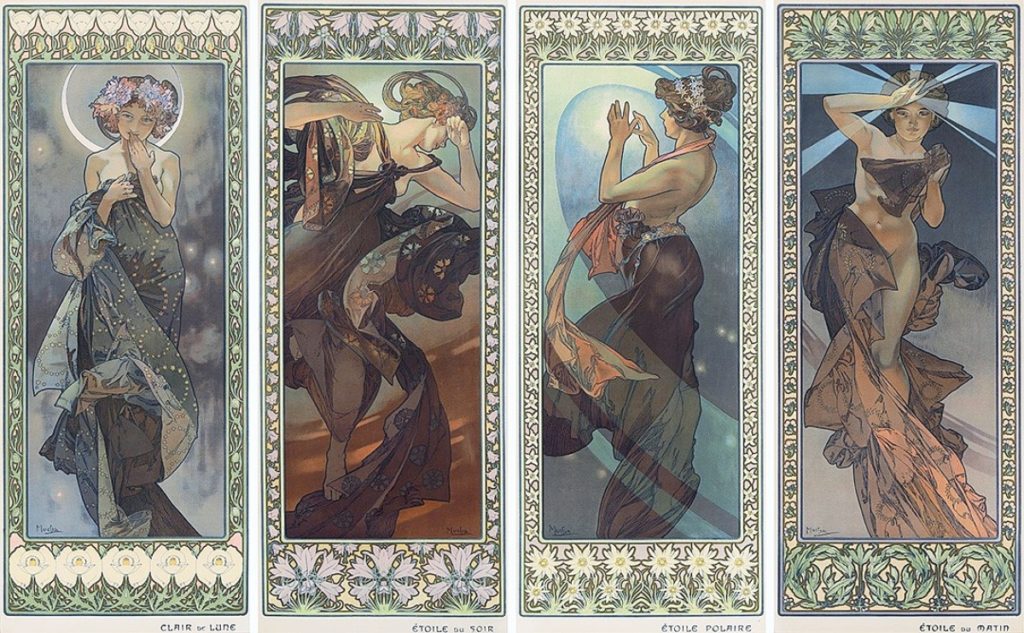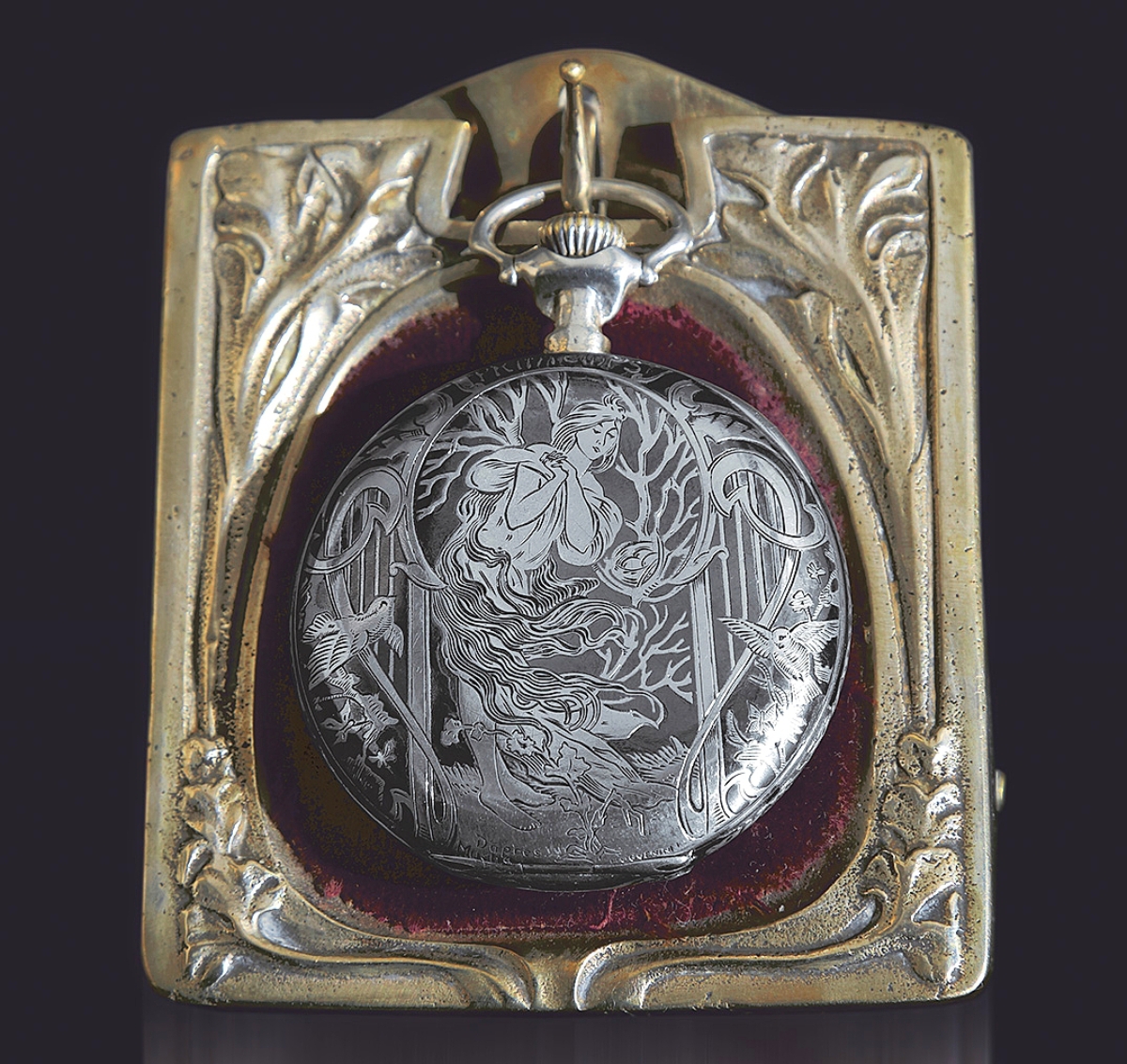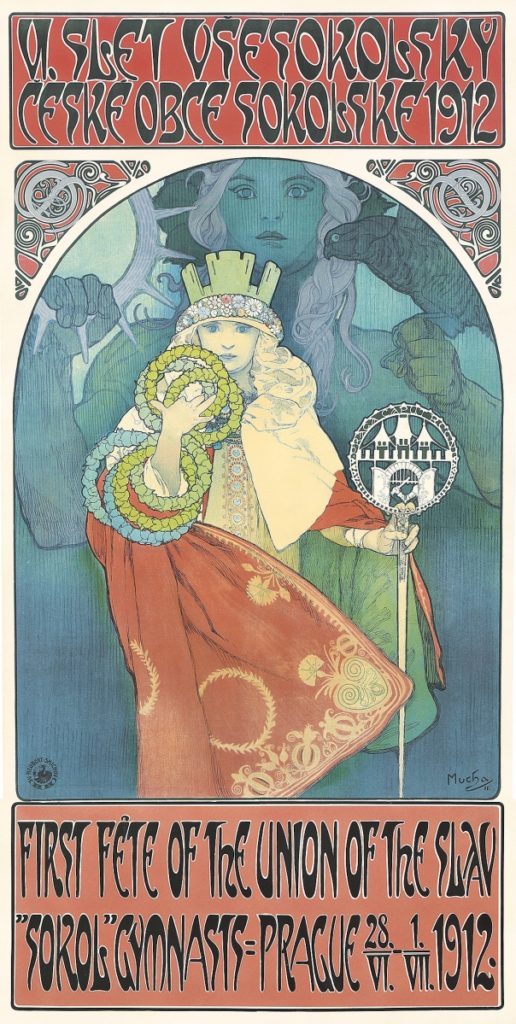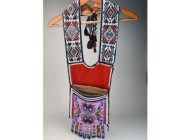
Alphonse Mucha personified the stars as female figures, seen left to right in this illustration from the 1902 The Stars series as the moon, the Evening Star, the North Star and the Morning Star. In the larger format, it led the sale at $114,000.
Review by W.A. Demers, Photos Courtesy Poster Auctions International
NEW YORK CITY – The 89th Rare Posters Auction from Poster Auctions International on March 26 featured rare and iconic images from a century of poster design. The collection included Art Nouveau, Art Deco, Modern and contemporary lithographs as well as decorative panels, maquettes and original works. The sale totaled $1,667,400 with 59 percent of the lots sold on two online platform, plus in-person, phone and absentee bids.
Collectors of Alphonse Mucha (Czech, 1860-1939) had 43 works to consider, ranging from his most beloved posters to rare variants and special objects. His 1902 series The Stars, in the larger format led the sale at $114,000. In his series of decorative panels, Mucha personified the stars as female figures. Seen left to right in the illustration are the Moon, the Evening Star, the North Star and the Morning Star.
This auction featured a number of one-of-a-kind works from the master of Art Nouveau, including his 1900 Printemps pocket watch engraved with one of his Spring maidens, which was awarded the Grand Prix at the 1900 Paris World’s Fair. It was estimated $30/40,000 but did much better, finishing at $78,000. Jewelry at a poster auction? Catalog notes explain that Mucha was a fan of designing wearable accessories. So when Georges Favre-Jacot, the founder of Zenith watches, asked him to contribute a design, Mucha adapted his 1896 Seasons imagery for the four designs; this one presented his Spring panel, which was engraved in niello silver by Huguenin Frères. There are six known sets of watches, four of which are in the Zenith Foundation Museum, one given to the city of Paris, and the single image that was offered here.

Jewelry at a poster auction? This 1900 Printemps pocket watch engraved with one of Mucha’s Spring maidens adapted from his 1896 Seasons imagery was awarded the Grand Prix at the 1900 Paris World’s Fair. The watch was estimated $30/40,000 but did much better, finishing at $78,000.
Much as the sunflower is the national symbol of Ukraine, the falcon (in Czech, “Sokol”) served a symbolic purpose when the Slav nations of Central Europe were the unwilling subjects of Austrian rule. The largest bird of prey to be found in the Czech woods, according to catalog notes, its name was used by an athletic organization aiming to train young people in athletics and organize, every four years, a countrywide gymnastics competition along the lines of the Olympic games. Behind its role as a mascot, however, the Sokol was a sub rosa call to arouse the nationalistic spirit and throw off the Austrian yoke. Here, Mucha takes the quadrennial Sokol Festival conducted in 1912, and creates a poster for the event that is a happy combination of the realistic with the symbolic: the girl with the garlands and the staff with Prague’s emblem on it is real, while the dimly adumbrated young woman in the background holding a spiked ring and a falcon is a symbolic figure. The only known version of the poster with the bottom text panel in English, this one more than doubled its high estimate to realize $72,000.
Mucha continued to dominate with La Dame aux Camelias, 1896, taking $43,200. Printed by F. Champenois, the two-sheet, 29-3/8-by-81-7/8-inch poster illustrated Alexander Dumas Jr’s drama and has been considered Mucha’s most beautiful poster. It illustrates the courtesan whose story of tragic love is its subject. The figure of the heroine in a white robe leans against a balustrade with a background of silver stars. Her rich swept-back hair is adorned with her favorite flower, the camellia, a heraldic flower repeated at the bottom of the poster, being held by a mysterious hand.
Mucha’s 1902 Cycles Perfecta earned $38,400, a Marketing 101 example in which the artist is not just selling the object itself, an English brand bicycle that was also sold in France, but the feeling that is associated with it. Here, Mucha evokes just a glimpse of the bicycle, employing his artistry to create a sylph caressing the bicycle, her windblown hair conjuring the feeling of motion and a restless spirit. It is, say the catalog notes, “a vision of idle loveliness and a perfect Mucha maiden.”
Mucha and Paul Gauguin were close friends and artistic colleagues, and in an intimate drawing, Mucha captures Gauguin with a quizzical look on his face. On the verso is a signed dedication from Mucha to Louis Aragon with a stamp from the Mucha estate. It was bid to $31,200.

Mucha created this poster for the quadrennial Sokol Festival conducted in 1912. The girl with the garlands and the staff with Prague’s emblem in the foreground is ghosted by a shaded young woman in the background holding a spiked ring and a falcon is a symbolic figure. The “Sokol,” or falcon served as a symbol of the Czech people’s nationalistic spirit and desire to throw off the Austrian yoke. The only known version of the poster with the bottom text panel in English, this one more than doubled its high estimate to realize $72,000.
Beyond the Mucha highlights, notable results were also obtained for a Paul Colin (1892-1986) portfolio, “Le Tumulte Noir,” 1929, published at the height of “the Black Craze” in Paris, a period of several years starting in 1925 during which black dancers and jazz musicians enjoyed great popularity. The portfolio’s 48 plates, published in a limited edition of 500, brought $36,000.
And Théophile-Alexandre Steinlen’s (1859-1923) tender poster Chocolats / Thés Cie Française, 1895, depicting a domestic breakfast scene (he used his wife Emilie and his daughter Colette as models) was created to promote the French Chocolate and Tea Company, but evokes much more. The 31þ-by-47-inch poster left the gallery at $33,600.
Rounding out the sale’s top highlights were Leonetto Cappiello’s Absinthe Gempp Pernod, 1903, $26,400; Privat Livemont, Absinthe Robette, 1896, $24,000; and Geo Ham’s Monaco Grand Prix, 1933, $21,600.
Prices given include the buyer’s premium as stated by the auction house. For information, www.posterauctions.com or 212-787-4000.












